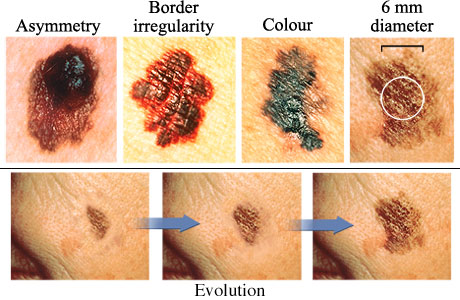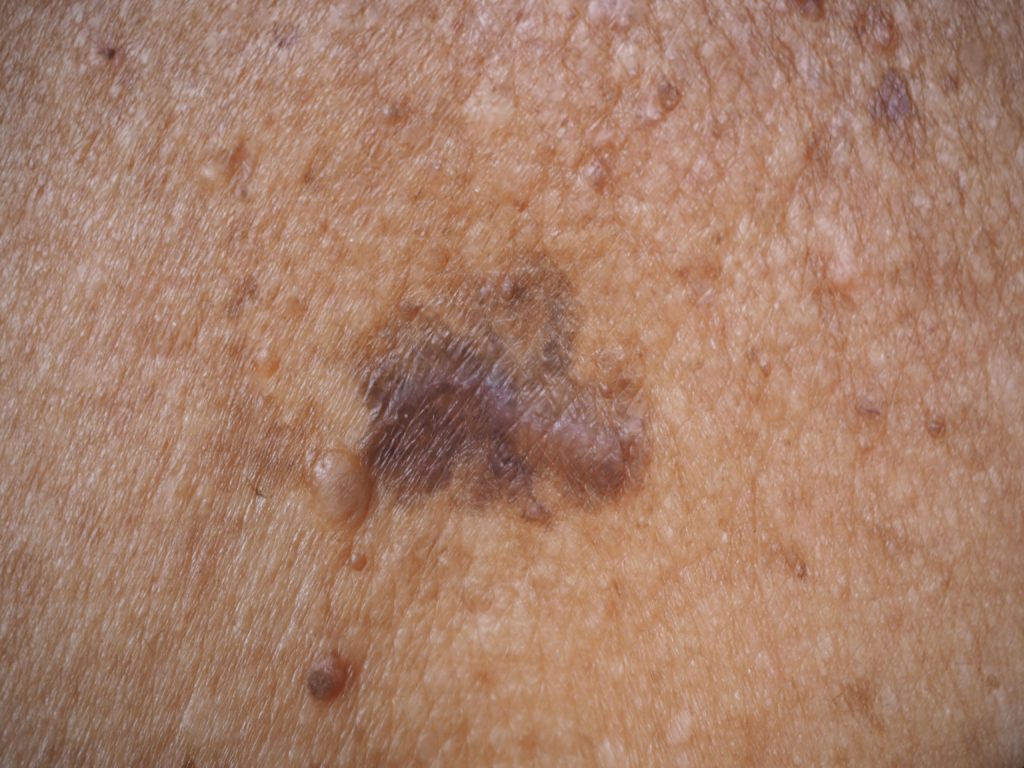Melanoma

Melanoma is the most serious form of skin cancer.
According to the American Academy of Dermatology, there are 1 million Americans living with Melanoma.
Anyone can develop melanoma but some people have a greater risk of developing melanoma within their lifetime.
- Light skinned individuals with more than 50 moles
- Previous history of skin cancer
- Individuals with a history of melanoma in their family
- Have more sun-sensitive skin (skin that sunburns easily and/or individuals with lighter colored eyes
- Excessive outdoor and/or indoor tanning history
- Have had other previous cancers (such as thyroid or breast cancer)
It is so important to schedule your regular full body skin exams. Our board-certified dermatologists and dermatology experts are highly trained in identifying skin cancers and melanomas. Early detection is key when it comes to successfully treating melanoma.
It is very important to monitor your skin for new and changing moles, and other signs of melanoma or other skin cancers. The ABCDE guidelines are a simply way to remember what you’re looking for.
A – Asymmetry. Normal moles are symmetrical. Melanomas and atypical moles are not.
B – Border irregularities. The edges of the mole are not well defined, and instead are jagged or blurred.
C – Color inconsistencies. The mole contains multiple colors; or different shades of the same color.
D – Diameter. Moles larger than 6 millimeters across (about ¼ inch – the size of a pencil eraser) are abnormal. Melanomas can be smaller than this, but on average most are as big as a pencil eraser or larger.
E – Evolving. The mole changes shape, size or color.
If you experience bleeding, itching, or crusting of a mole, it is important that you make an appointment with us to have it examined! Do not wait until your full body skin exam if you experience any of these symptoms. Call us immediately.

melanoma

